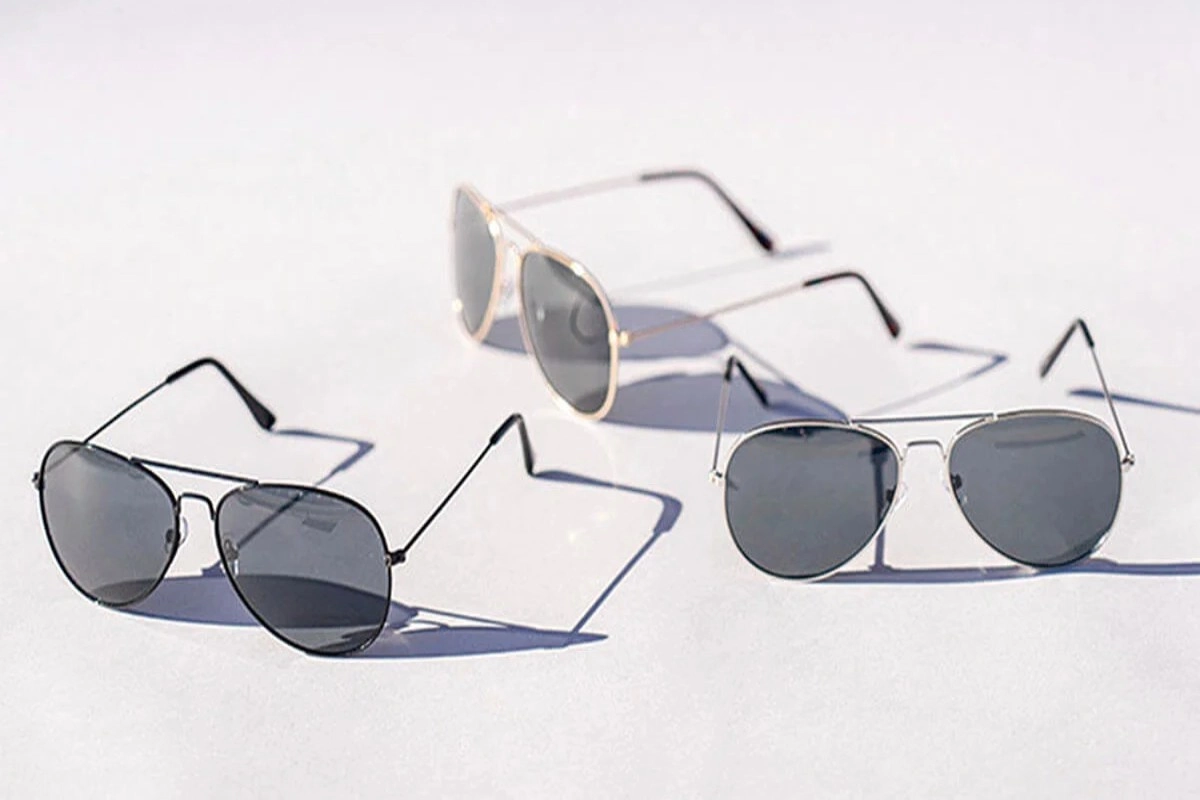Sunglasses are an outfit staple for many people, due to their practicality as well as trendiness. There is a wide variety of styles available today, with some having additional extras like anti-scratch or anti-reflective coatings. However, most historical ‘sunglasses’ were designed with specific practical functions in mind, and it would be a while before they became a fashion accessory.
Table of Contents
The First Sunglasses:
Some of the very first ‘sunglasses’ were crafted by the Inuit people to protect their eyes from snow blindness caused by the glare of sunlight reflected on snow. They were usually carved from materials such as driftwood, bone, ivory or antlers into a strip that was worn over the eye area, with thin slits over each eye for the wearer to see through. The ‘glasses’ were designed to fit tightly to the face, and would also have soot rubbed on the outside to absorb light and assist in cutting down glare. It is thought that use of these ‘glasses’ dates back around 2,000 years, and the slits would help to focus the wearer’s vision.
Other Historical ‘Sunglasses’:
According to Pliny the Elder, Emperor Nero would watch gladiator fights through gemstones (reportedly emeralds) to reduce glare, with some experts believing that the centre of the gems may have been carved out to create concave lenses. However, it is unlikely that these would have provided any form of protection, instead acting like mirrors or potentially aiding shortsightedness.
In China during the 12th Century, magistrates would allegedly wear smoky quartz lenses when in court. It is believed that the main purpose of this was to prevent witnesses from being able to properly see their facial expressions during interrogations, but they may have also protected their eyes from glare.
During the mid-1700s, an English optician named James Ayscough conducted experiments with tinted lenses to see if they could be used to treat vision problems. He believed that changing the colour of the lens (blue or green) could help with certain vision impairments. Additionally, in the late 1700s Goldoni glasses began to be worn by Gondoliers in Venice to protect their eyes whilst working in the canals. They were made to protect eyes from the sun, leading many to think that these may be the first ‘proper’ sunglasses.
During the American Civil War, soldiers were issued specialised glasses that would be worn during combat. These glasses had orange tinted lenses, with an unshaded circle over the pupil area to help snipers concentrate on their targets. Furthermore, in the 1800s, medical sunglasses began to be worn by people to correct various eye problems, including cataracts. Similarly, around the early 20th century, sunglasses were often worn by people with Syphilis. As the disease made eyes more sensitive to light, sufferers would be prescribed yellow or brown tinted lenses to ease their discomfort.
The 1920s & 1930s:
From the 1920s onwards, sunglasses slowly started to become associated with fashion and celebrities. Famous film stars would often wear sunglasses when seen out in public, as they helped to hide their identity. They also commonly suffered from red eyes due to the powerful lights used in film studios, which they would disguise with sunglasses. In 1929, affordable mass-produced sunglasses became available in America. Introduced by Sam Foster under the name Foster Grant, he sold his sunglasses to beach visitors in Atlantic City so that they could protect their eyes from the sun, and they soon became popular elsewhere.
In 1936, Edwin H. Land, co-founder of Polaroid, invented polarised lenses and polarised sunglasses first became available. These had a special filter on the lenses that would block out the light reflected from other surfaces, such as snow. Additionally, in 1937 Ray Ban, a brand founded by eye health company Bausch and Lomb, released aviator sunglasses. These used polarised lenses that were popular amongst World War II pilots in the US for blocking the glare from the sun. Soon after this they went on sale to the public, and sunglasses with UV protection have since become the standard in the fashion industry.
Modern Times:
Nowadays, sunglasses are heavily present in popular culture and mainstream fashion. Certain styles have become synonymous with celebrities, such as John Lennon’s round pair or Elton John’s flamboyant, bedazzled sunglasses. Similarly, various types of sunglasses have increased in popularity after being featured in films. For example, sales of Ray Ban aviators supposedly increased by around forty percent after the release of Top Gun in 1986. Men In Black reportedly tripled sales of the Ray Ban ‘Predator 2’ sunglasses in 1997, and tiny lensed glasses also came back into fashion following the popularity of The Matrix in 1999. Many retro styles are making a comeback, such as cat-eye sunglasses that were trendy in the 1950s and 60s after being worn by film stars like Audrey Hepburn.
Although many early ‘sunglasses’ were designed for specific functions instead of fashion, the same can still be said for sunglasses today. Although they are often seen as being more of a fashion accessory, sunglasses are primarily worn to protect the wearer’s eyes from the sun. There are also many rules and regulations around the sale of sunglasses, such as the requirement of the CE mark, which are in place to ensure they meet safety standards. Sunglasses that are purely intended for fashion and offer no UV protection are still available, but people are often advised against wearing these.
Also Read: Silk Sarees

